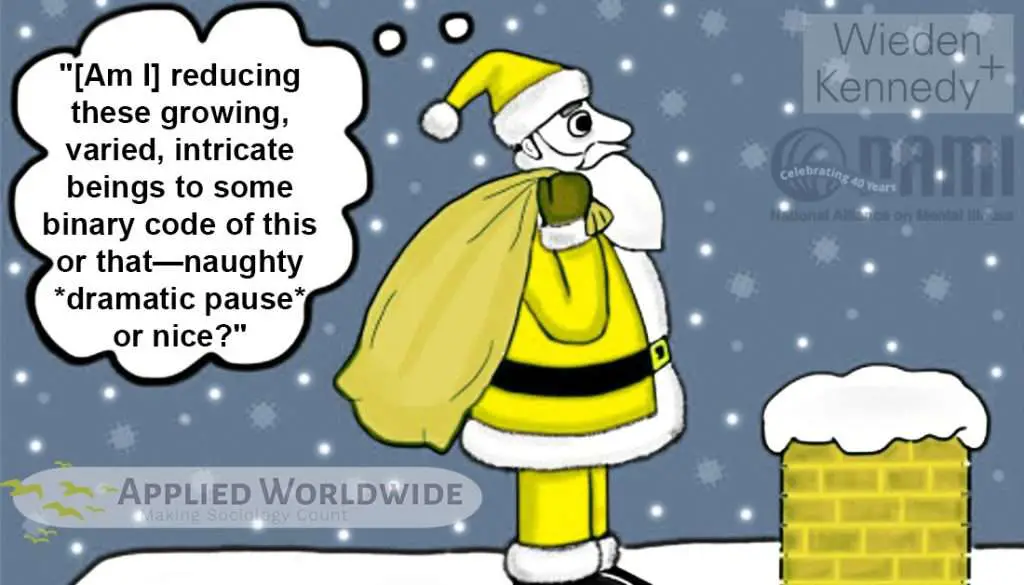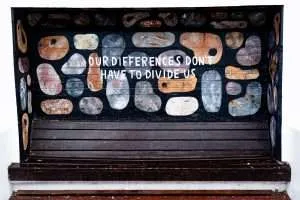Is Santa Claus a Public Health Risk?
Is Santa Claus really the healthiest role model to represent Christmas? In this article I investigate using a discourse analysis of christmas. At Applied Worldwide, whenever there is a major event or holiday we like to conduct mini-discourse analyses, to learn the current trends. This year Christmas is no exception, so I set out to learn how people are talking about Christmas in 2019.

One interesting trend that I noticed this year is discussion about ways in which Santa Claus represents a public health crisis. To be clear, I am not necessarily taking the stance that Santa Claus is a risk to public health. In fact until I encountered this recent discourse, I believed Santa to represent a religiously-neutral figure symbolizing Christmas as a national or social holiday rather than an exclusively Christian celebration.
Despite my preconceived notions of the holiday, there is value in reflecting critically on Santa Claus as a symbol of Christmas. Here I would like to draw on three sources of discourse, that seem to offer evidence that Santa is a danger to our public health.
Santa Claus: a public health pariah?
As I began to see evidence of people describing the public health risks of Santa Claus, I decided to trace the idea back to an origin story. In my search I discovered an article published by BMJ titled, Santa Claus: a public health pariah? In BMJ’s article they list several factors that make Santa Claus a danger.
The first reason the author’s list is that Santa Claus sells products to children, not all of which may be healthy. Santa Claus is obviously used during the holidays as a marketing tool for a variety of companies. While many of these advertising campaigns are likely pushing toys or other child-friendly products, what about soda commercials? Cigarettes? Alcohol? Sex toys? Marijuana? As a society we are happy to discuss laws restricting what companies can advertise to children, yet Santa Claus has largely gone unrestricted. Presuming that children make up the largest population of Santa Claus believers, should laws restrict what products Santa can endorse?
The remaining reasons listed in the BMJ as potential public dangers relate to Santa Claus’ many unhealthy behavioral habits. For instance, Santa Claus has shown a history of risky behavior like flying at high speeds, poor dietary habits, a legitimate belief in magic, and even smoking. In any case, it seems Santa Claus may not be the best role model.
Santa Rethinks ‘Naughty or Nice’
Ok I get it, suggesting that Santa Claus represents a public health crisis based on imaginary dietary habits and reckless travel in a reindeer-led sleigh is a bit far-fetched. Who knows maybe I am naïve, but when I came across a public service announcement created by Wieden + Kennedy New York for the National Alliance of Mental Illness (NAMI), it got me thinking.
The roughly 2-minute video, both made me laugh and seriously reflect on how Santa’s message might impact the mental health of children. The video shows an actor playing Santa Claus sitting on a rooftop suggesting that his naughty or nice list may be producing a false binary. The underlying premise is that many children may demonstrate behaviors beyond their control that earn them a spot on the naughty list.

Obviously, naughty and nice behavior amongst children is socially constructed and I can see some legitimate examples in which a naughty/nice binary can be dangerous. For instance, how about young people with an attention disorder? Children with ADHD have a long history of being socially viewed as “naughty.” Or, how about gender non-conforming or trans children? Again, these youths may feel as if they are naughty if they do not present themselves in a particular way.
It seems strange to blame Santa Claus as if he was not a fictional character, but it is not far-fetched to imagine authority figures using Santa Claus as leverage to persuade children into traditional behaviors that may not be in the child’s best interest.
SantaCon
If the symbolic version of Santa Claus still does not seem like a threat to the public, then let’s think about what happens when that symbol manifests itself in grown adults. SantaCon happens every year in multiple different cities throughout the United States. If you are unfamiliar, the event involves millions of adults dressing up like Santa Claus and hitting the streets for a pub crawl.
SantaCon is something that I have heard of in the past, but I have never really considered participation. After watching a recent segment from John Oliver, I am pretty sure I have no interest. To briefly summarize the piece, John Oliver explains how SantaCon began as a philanthropic endeavor that has morphed into a large-scale depiction of ‘bad Santa.’ Whether it is public sex acts or drunken brawls, SantaCon has become an additional way in which Santa Claus poses a public risk.
If we are only talking about the Santa Claus’ fictional public image we might argue that it is up to parents to translate Santa’s mysterious behavior, or advertisers to responsibly represent a healthy version of the character according to contemporary standards. But it is difficult tell children that a soda-consuming version of a fictional character is unhealthy when there are millions of real-life adults representing Santa Claus with drunken public sex or fighting.
Conclusions to this Discourse Analysis of Christmas
In my observations of the holiday discourse this year I have noticed multiple instances where Santa Claus is being represented as a risk to public health. It seems the biggest concern is that Santa Claus is an influential character for children who may still believe in the characters existence. Historically, Santa has been represented as an obese man running an exploitative manufacturing business, whose most notable action is a high-risk distribution process fueled by a diet of cookies and milk.
As applied sociologists, the least we can do is work with organizations who advertise using depictions of Santa Claus to ensure the image is used to sell products that are healthy for the children who still believe. As parents and humans we should understand the influence of figures such as Santa Claus and continue to reflect on how that symbol is portrayed in everyday life.
My takeaway point from this brief assessment is that Santa Claus should not be represented as drawing a hardline between right and wrong, particularly if the adults constructing such a representation can be found engaging in public behaviors that do not adhere to the same standards.
The Christmas Spirit: A Sociological Perspective on Seasonal Altruism







